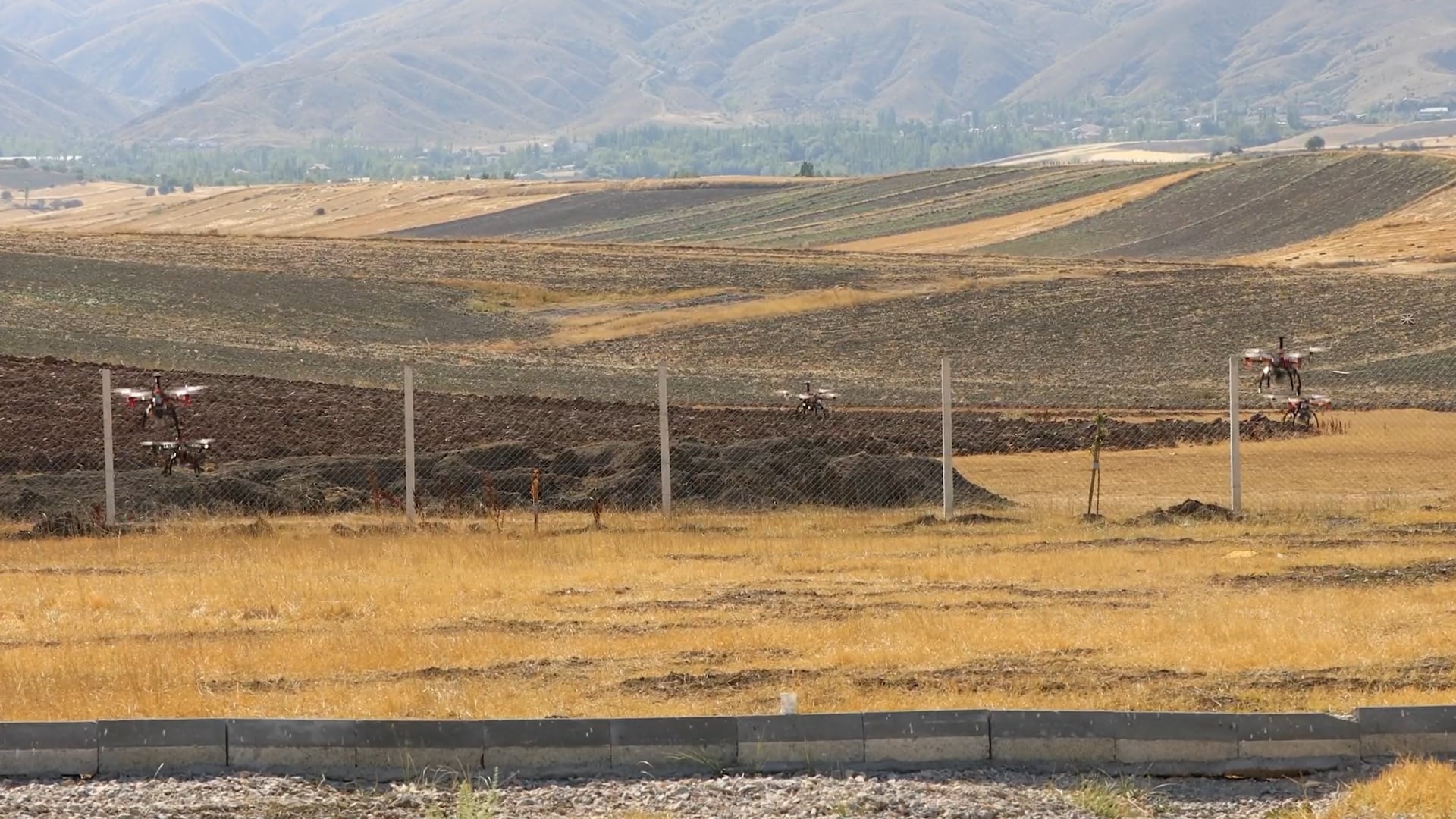MERSIN, Turkey — The Turkish defense company Havelsan last week demonstrated a key milestone of its Digital Troop project in the country’s capital Ankara — an effort focused on digital technology for troops and drone swarms.
During the field test, the company deployed two Baha sub-cloud — or low-altitude — unmanned aerial vehicles; two Barkan unmanned ground vehicles; and a swarm consisting of five drones.
Mehmet Akif Nacar, who leads Havelsan, said the assets performed their tasks during the scenario. He explained that two Pioneer drones provided aerial surveillance and guided the unmanned ground vehicles to identified targets, while the swarm provided reconnaissance. The entire operation was controlled by the so-called Mixed Swarm Operation Center.
“This stage was one of the most important milestones we wanted to achieve in terms of digital forces and swarm technologies. In the future systems, we will continue to develop this ecosystem by working on different scenarios — scenarios where more unmanned aerial vehicles, unmanned ground vehicles and swarm drones can be used, and where multiple drones can operate simultaneously,” Nacar said.

The company told Defense News that the Digital Troop’s research and development phase began three years ago.
“In 2020, the design and development studies of the unmanned ground vehicle Barkan were conducted, the first power supply was provided and the first run was conducted at the end of the year. In the same year, the first design and development studies of the Baha sub-cloud unmanned aerial vehicle began, and the first test flight of Baha was conducted five months later,” the firm said.
Then in 2021, Havelsan launched field tests of its unmanned ground vehicle and drone swarm technologies, the company noted, while a task group worked on the subcloud drones in 2022.
Havelsan declined to comment on upcoming developments, citing confidentiality.
What is the Digital Troop effort?
The Digital Troop concept aims to develop technologies that enable battlefield activities to take less time and be more effective. The idea consists of three main pillars:
- Training and battle preparation through the use of high-tech simulations developed by the company.
- Wearable technologies that help soldiers more easily carry heavy loads, move faster and use heavier weapons. A mechanical, skeletal structure is to be 10 times the size of an average soldier, who will be able to simultaneously communicate with teammates and unmanned systems, assigning objectives as well as sharing location information and tasks.
- The integrated autonomous robotic system, created when the user integrates autonomous unmanned systems with wearable technologies and a command-and-control center, is the foundation of the concept. The control of multiple unmanned ground and aerial vehicles by an individual could mean less soldiers involved in an operation.
The company also wants to incorporate its Sancar unmanned surface vessel. All assets would be managed as part of a network-centric architecture using the company’s combat management system Advent.
Havelsan exported the Baha drone to an African country during the 2023 IDEF exhibition in Istanbul in late July. The Barkan vehicle has gained initial operating capability and was delivered to the Turkish military last year.
Tayfun Ozberk is a Turkey correspondent for Defense News.







